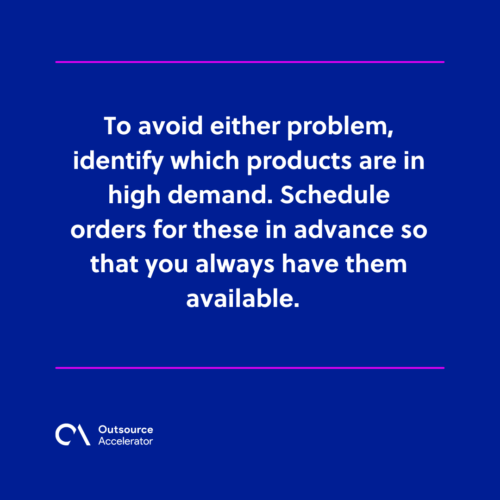9 financial management best practices for growing businesses

This article is a submission by D&V Philippines. D&V Philippines has years of experience in the accounting and finance industry. This third-party services company can provide you with the back-office support you need.
Inefficient financial management creates problems for businesses, such as insufficient funds to pay for dues and loans. They may also experience poor resource allocation, which has a negative effect on their profitability and operation efficiency.
Ultimately, ineffective financial management may result in a lack of possible growth opportunities, and it increases the possibility of business failure.
Why financial management is a must for businesses
Financial management is an important practice for businesses regardless of their industry. It allows companies not only to survive but to thrive. Robust financial management enables them to:
- Maintain financial flexibility to pay for loans
- Invest in their employees
- Develop products and services
- Launch sales and marketing campaigns
It allows growing businesses to manage their cash flow to sustain profitability.
9 financial management best practices
These are some of the best practices in financial management for growing businesses:
1. Establish a clear plan
A clear and detailed plan allows you to plot the future and direction of your growing business.
You’ll know where to direct your resources because of the goals you established. You’ll have a general idea of how to respond to problems and the amount of money you’re willing to spend to solve them.
This is a prudent approach to navigating an uncertain business landscape with some external factors beyond your control. However, maintaining flexibility is vital. Foreseen and unforeseen challenges will always be present.
Your plan should allow you to change course because of current events that may change the trajectory of your business.

2. Monitor your finances frequently
You need to be aware of your company’s financial position.
Monitor your business’ cash flow to identify which aspects of operations, campaigns, projects, and tasks consume your resources the most and which ones require more or less funding. This practice enables you to determine if you’re following the plan you established.
If you’re deviating from your objectives, you can get back on track. If your financial position is no longer the same or you decide to change strategies, you can redirect your business and shift your goals.
Monitoring your finances also allows you to gain insights into the sales figures you need to reach so that your company remains profitable.
3. Update your accounting books regularly
Your accounting books and financial statements are your main sources of data and information. These provide you with numbers that indicate your company’s previous and current financial position.
It’s also possible that your books may have errors in them. Mistakes in your data may lead to costly decisions about budget allocation, funding campaigns, or erroneous tax filings.
You need to update your books regularly so that you always have real-time and correct financial information you can use to make decisions about your growing business.
Updated books provide you with an overview of your company’s financial position, which you can use as a basis for creating a budget and implementing your plans.
You might want to consider hiring back-office support if your employees lack the skills and experience to update accounting books correctly and efficiently.
4. Make sure you receive payments on time
Your business might be generating a lot of revenue, but if most of this is accounts receivable, your company’s cash might be insufficient. This might lead to delays in releasing payment to your own suppliers and partners.
You must ensure your customers pay you on time. Include payment terms and conditions and make them obvious. Enforce strict collection rules and penalize late-paying customers.
Automate the sending of invoices and notifications. Use a system to monitor which customers have already paid and which ones still have outstanding dues.
5. Identify your business’ recurring costs
Efficient financial management requires you to know your business’ recurring costs. You’ll need to identify recurring expenses such as:
- Salaries
- Rent (if you don’t own your office space)
- Subscriptions (internet, software, etc.)
- Warehouse fees
- Petty cash disbursement
This allows you to manage your budget and make sure that you always have enough cash on hand to cover these expenses.
Proper handling of short-term expenditures provides you with financial flexibility, which you can use for future growth opportunities.
6. Address problems as they occur
All companies encounter financial challenges along their timeline. Setting aside a small problem will not make it disappear or solve itself.
Delaying a solution will lead to higher costs and possible fees. You need to take a proactive approach to solving the financial problems your business may experience.
Create a priority list and distribute funds you may need to spend when you create and implement a feasible solution.
Establish goals and timelines and designate a team and delineate tasks. This meticulous approach puts out a fire before it spreads.
7. Pay taxes and partners on time
Always pay your taxes on time. Late payments incur penalties that add to your company’s costs and reduce your profit.
It’s important to keep your accounting books updated so that you don’t have to rush during tax season. Plan your filing, recording, and updating in advance so that you won’t miss your deadline.
You must also pay your partners on time. Delinquencies may strain your business relationships. Your partners might also reduce or remove the favorable terms they gave you.
Automate and schedule recurring payments you send to partners so that you’re always on time.
8. Efficient inventory management
Low levels of inventory or overstocking create problems for your business. Low stocks mean that you’re unable to meet the demand of your customers. You’ll lose potential profit because a customer can’t find or buy the item/s they want.
Overstocking means that you’re not moving products fast enough to reach your sales targets. Goods stuck in your storage space incur costs.
To avoid either problem, identify which products are in high demand. Schedule orders for these in advance so that you always have them available.

9. Finance your company
You’ll need different sources of financing to achieve the objectives you established. Consider getting loans from banks, government agencies, or third-party investors.
Using your own resources for long-term projects might constrict your cash flow. Loans and credit from banks, agencies, and/or investors provide you with the flexibility to take calculated risks and grow your business.
You’ll need to manage your finances efficiently to achieve your goals and sustain the profitability of your business.







 Independent
Independent




